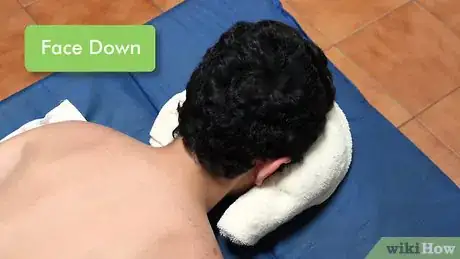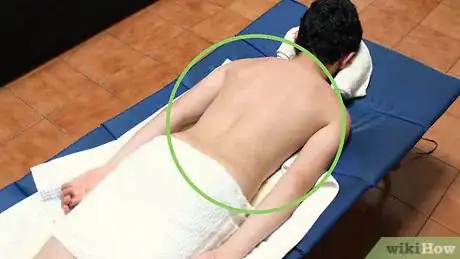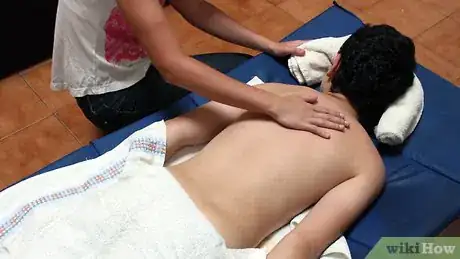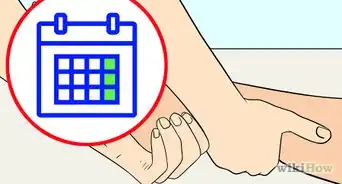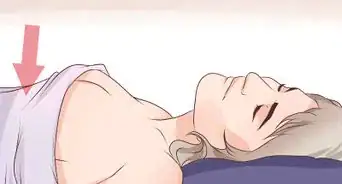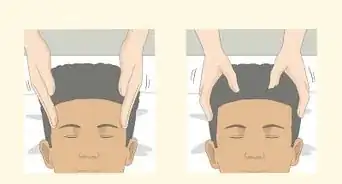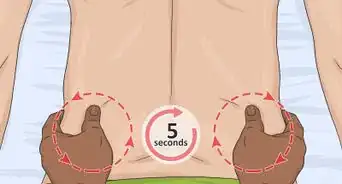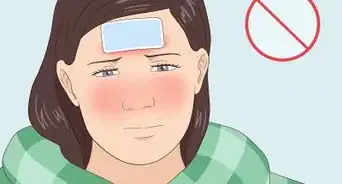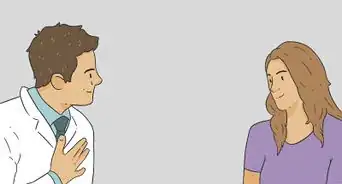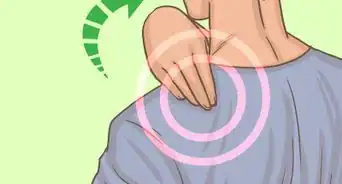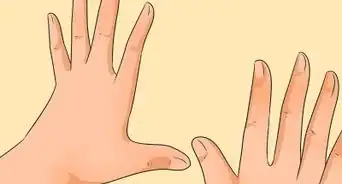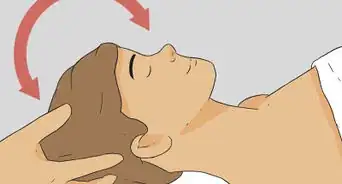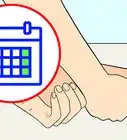This article was co-authored by Will Fuller. Will Fuller is a Certified Massage Therapist and Wellness Educator working in San Francisco, California. Will has worked with the Sports and Recreation Center at the University of California, San Francisco (UCSF), taught sports in England, Kenya, and Kuwait, and is now affiliated with the Chiro-Medical Group. He was trained in physical rehabilitation under a program founded by Dr. Meir Schneider. He has a Bachelors in Sport Science and a Post-Graduate Certificate of Education in Physical Education from Southampton University.
wikiHow marks an article as reader-approved once it receives enough positive feedback. This article received 27 testimonials and 90% of readers who voted found it helpful, earning it our reader-approved status.
This article has been viewed 5,374,288 times.
While performing an advanced, therapeutic back massage requires plenty of professional training, you can still give someone a relaxing, tissue-stimulating massage even without training. By learning some of the basic massage techniques and how to apply them, you can begin giving quality massages at home. One of the most important parts to note is that without professional training, you should apply only light pressure with all of your techniques.
Steps
Setting Up for a Back Massage
-
1Choose a comfortable location. Using a massage table will give you the best access to somebody's back, and it's built for comfort, complete with a face cradle for alignment of the spine. However, if that's not available, there are a few alternatives.
- If you'd like to purchase a massage table, you can find one here.
- If you don't have access to a massage table, then you can try using the floor, a couch, a bed, or even a kitchen table if it’s sturdy enough for the person to lie on. Each option has drawbacks that make it less ideal than a massage table, mostly due to comfort issues for the person receiving the massage and height issues requiring the person giving the massage to lean over in uncomfortable ways.
- If a bed is the best option available, make sure that the suggestion doesn’t come across as inappropriate. Consider the relationship you have with the person and discuss that the massage will take place on a bed beforehand.
-
2Place a soft mat down. If you don’t have access to a massage table, and you’re opting for one of the harder-surfaced alternatives, then lay down a soft mat. Use a mat that is at least two inches thick to provide the proper comfort for the person receiving the massage.Advertisement
-
3Spread a sheet over the table or mat. Since the person will dress down most or all of the way for his or her massage, a clean sheet over the mat or table will be both more hygienic and more comfortable for the person. It will also catch any excess oil.
-
4Prepare the room. Make sure the room is warm without being hot. This is the ideal atmosphere for the person to relax the muscles you’re trying to massage.
- Play some uneventful music. New age, ambient music, quiet classical music, or even soundscapes will help the person relax to their fullest. Pulsing, driving music won't help. Keep the volume low.
- Turn the lights down just enough so there's no glare in the room.
- Light scented aromatherapy candles. This is optional, and you should ask the person before lighting the candles since some people enjoy the smells while others are too sensitive to them.
-
5Have the person undress to his or her comfort level. Massage is best given and received without clothing on the area being massaged, especially if you are using oil or lotion. Request that the person undresses as much as he or she is comfortable with.
- Always provide an additional towel or sheet above and beyond the one covering the table. This way the person can lie down and cover the parts of his or her body not being massaged. This will make the environment both more comfortable and warmer, which is relaxing.
- If privacy is a concern, step out of the room as you have the person dress down and cover himself/herself with the additional towel or sheet. Knock and ensure that the person is ready for reentering the room.
- If the person left pants or underwear on, you could tuck the edge of the towel or sheet into the waistband to ensure no oil from the massage stains the material.
-
6Have the person lie face down. If you have a proper massage table, this means the person’s face will rest in the face cradle.
- If it’s comfortable for the person, you can also use a pillow or folded towel beneath the ankles. This will support the person's lower back.
-
7Expose the person’s back. If the person wrapped a towel while undressing or pulled the additional sheet all the way up, then fold the material down to expose the person’s back.
Giving a Back Massage
-
1Tell the person you are about to begin. Tell them to let you know if anything you are doing is painful or uncomfortable. Part of them being comfortable is having a feeling of trust in you. This is not the time to make jokes or suggestive comments.
- Ask them where they usually feel tension or pain, if they've gone to physical therapy or seen a chiropractor in the past, and if they have any diagnosis before you get started. This will give you a better picture of their situation so you're able to better help and not make their pain worse.[1]
- Periodically remind the person to take a slow, deep breath. It will help with relaxation.
-
2Pour massage oil in the palm of your hand. Start with about one teaspoon, which is roughly the size of a quarter. Warm it by rubbing it between your hands before applying it to the person.
- Good oils to use are organic coconut oil, grape seed oil, jojoba oil, or almond oil. There are many expensive scented and speciality massage oils on the market you can try too. You can explore massage oil options here.
-
3Spread the oil around. The main technique for spreading the warmed oil across the person’s back is called effleurage, which means “light friction.”[2] Use gliding movements in long, even strokes.[3]
- Use the whole of your hands and start at the bottom of the person’s back, moving upward. Always upward toward the heart (the direction of blood flow) while applying pressure, and then lightly bring the hands down the outside of the back lightly. Maintain contact without applying pressure as you bring your hands back down.
- Repeat this technique for 3-5 minutes while gradually increasing from light to medium pressure to warm up the back muscles.
- Don’t forget the shoulders and neck area.
-
4Use petrissage techniques. Petrissage uses shorter, circular strokes with more pressure than effleurage.[4] You can think of this as a kneading technique that uses rolling and pressing to enhance deeper circulation.[5]
- This technique can use the palm, fingertips, or even the knuckles in the short, circular motions.[6]
- The movement should come from the waist—your core—rather than from the shoulders. This will help keep you from becoming fatigued.
- Go across the entire back for 2-5 minutes. You can alternate between this and lighter effleurage movements to diversify techniques.
- Without professional training, use only light to medium pressure while applying petrissage movements.
-
5Apply percussive strokes. Percussive strokes (also known as tapotement) are collections of brief, repetitive contacts with parts of the hand.[7] You can use your cupped hands, your fingertips all gathered to an even point, or even the flat of your fingers on the knuckle side of your hands to make the contacts.[8] These movements have a stimulating, compressive effect on the tissue.[9]
- Keep your wrists relaxed and flex at the wrists, using quick movements to perform tapotement techniques.[10] This ensures that you don’t apply too much pressure.
- Spend 2-3 minutes applying the techniques across the person’s entire back.
- You can also try using an electric massager gun to perform percussive therapy. Electric massagers are effective, feel great, and have the benefit of not tiring out the person performing the massage. You can explore electric massager options here.
-
6Use muscle-lifting techniques. To perform this, close your fingers and hold out your thumb (in a “lobster claw” shape). Apply pressure in a twisting, lifting motion. Keep alternating hands in a “windshield wiper” movement.
- Move up and down the back 2-3 times.
-
7Use a fanning technique. Position yourself at the head of the table. Position your thumbs at the top of the back, just below the neck and on either side of the spine. Using a "fanning" motion with your thumbs extended, push gently down toward the lower back with your pressure angled at the person’s feet, not down towards the ground. Alternate your pressure on either thumb, moving from the top of the back all the way down to the person's hips.
- Make sure you are massaging the muscles on either side of the spine, not directly on the spine itself. Massaging over the spine can be very uncomfortable and dangerous if you are not trained properly.
-
8Apply twists. Come back around to the person's side. Reach around the far hip with one hand, while the other hand rests on the near hip. With a fluid motion, pull one hand towards you as the other one pushes away; in the middle, they should slide against each other, in opposite directions. Repeat this stroke up the back until you reach the shoulder area, then come back down. Repeat three times.
Help with Technique
Community Q&A
-
QuestionIs the skin being pinched in number six in the article?
 Community AnswerTechnically yes, it's considered as a pinch but you are only gripping lightly enough to hold the technique. It should cause no discomfort to the receiver of the massage.
Community AnswerTechnically yes, it's considered as a pinch but you are only gripping lightly enough to hold the technique. It should cause no discomfort to the receiver of the massage. -
QuestionHow long should I give the back massage?
 Community AnswerAs long as you and the person would like. But most massage therapy places do it for 30-60 minutes.
Community AnswerAs long as you and the person would like. But most massage therapy places do it for 30-60 minutes. -
QuestionAre massages good for the body?
 Community AnswerYes! Massages can help relax the muscles. Some people also find that massages help reduce stress as well.
Community AnswerYes! Massages can help relax the muscles. Some people also find that massages help reduce stress as well.
Warnings
- Avoid putting any pressure on the spine.⧼thumbs_response⧽
- Always be gentle when applying pressure on the lower back. Remember that there are no ribs to protect the internal organs from the pressure of your hands.⧼thumbs_response⧽
- Avoid broken skin, blisters, or areas of possible infection.⧼thumbs_response⧽
- Use only light pressure on the neck and head. Only a trained massage therapist should use deeper pressure because of arteries and contraindications for certain health conditions.⧼thumbs_response⧽
- There are some cases in which massages can aggravate a medical condition. A person should consult a doctor before receiving a massage if they have any of the following issues/conditions:[13]
- Deep vein thrombosis (a blood clot in a deep vein, usually in the legs)
- Spinal injuries or damage such as a herniated disk
- A bleeding disorder or taking blood-thinning drugs such as Warfarin
- Damaged blood vessels
- Weakened bones from osteoporosis, a recent fracture, or cancer
- A fever
- Any of the following in an area that would be massaged: open or healing wound, tumour, damaged nerves, an infection or acute inflammation, inflammation from radiation treatment
- Pregnancy
- Cancer
- Fragile skin from diabetes or a healing scar
- Heart problems
⧼thumbs_response⧽
Things You'll Need
- A massage table, mattress, or mat
- A sheet
- Massage oil or baby oil
- 3 towels
- A pillow or cushion
References
- ↑ Will Fuller. Certified Massage Therapist. Expert Interview. 9 January 2020.
- ↑ http://www.massagenerd.com/Many_Massage_Techniques.php
- ↑ http://www.massagenerd.com/Many_Massage_Techniques.php
- ↑ http://www.massagetherapy101.com/massage-techniques/massage-stroke-glossary.aspx
- ↑ http://www.massagenerd.com/Many_Massage_Techniques.php
- ↑ http://www.massagetherapy101.com/massage-techniques/massage-stroke-glossary.aspx
- ↑ http://www.massagetherapy101.com/massage-techniques/massage-stroke-glossary.aspx
- ↑ https://youtu.be/UmN-CHYpVX0?t=116
- ↑ http://www.massagetherapy101.com/massage-techniques/massage-stroke-glossary.aspx
- ↑ http://www.massagenerd.com/Many_Massage_Techniques.php
- ↑ Will Fuller. Certified Massage Therapist. Expert Interview. 9 January 2020.
- ↑ Will Fuller. Certified Massage Therapist. Expert Interview. 9 January 2020.
- ↑ http://nccam.nih.gov/health/massage/#5
About This Article
Although different people like different techniques, a good basic place to start is long, smooth motions with gentle to medium pressure. Avoid pressing directly on the person's spine, focusing instead on areas with a lot of muscle, like around the person's shoulders and neck. Then, occasionally, break up the smooth motions by moving your hands in a circular motion. If you feel an area that seems especially tense, spend a little extra time massaging it with the heel of your hand or your thumbs. Keep reading for tips on setting up your massage from our certified massage therapist!





